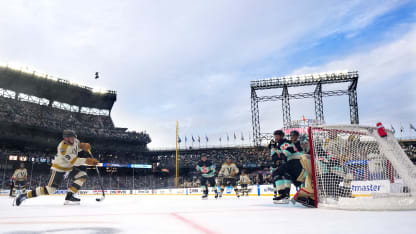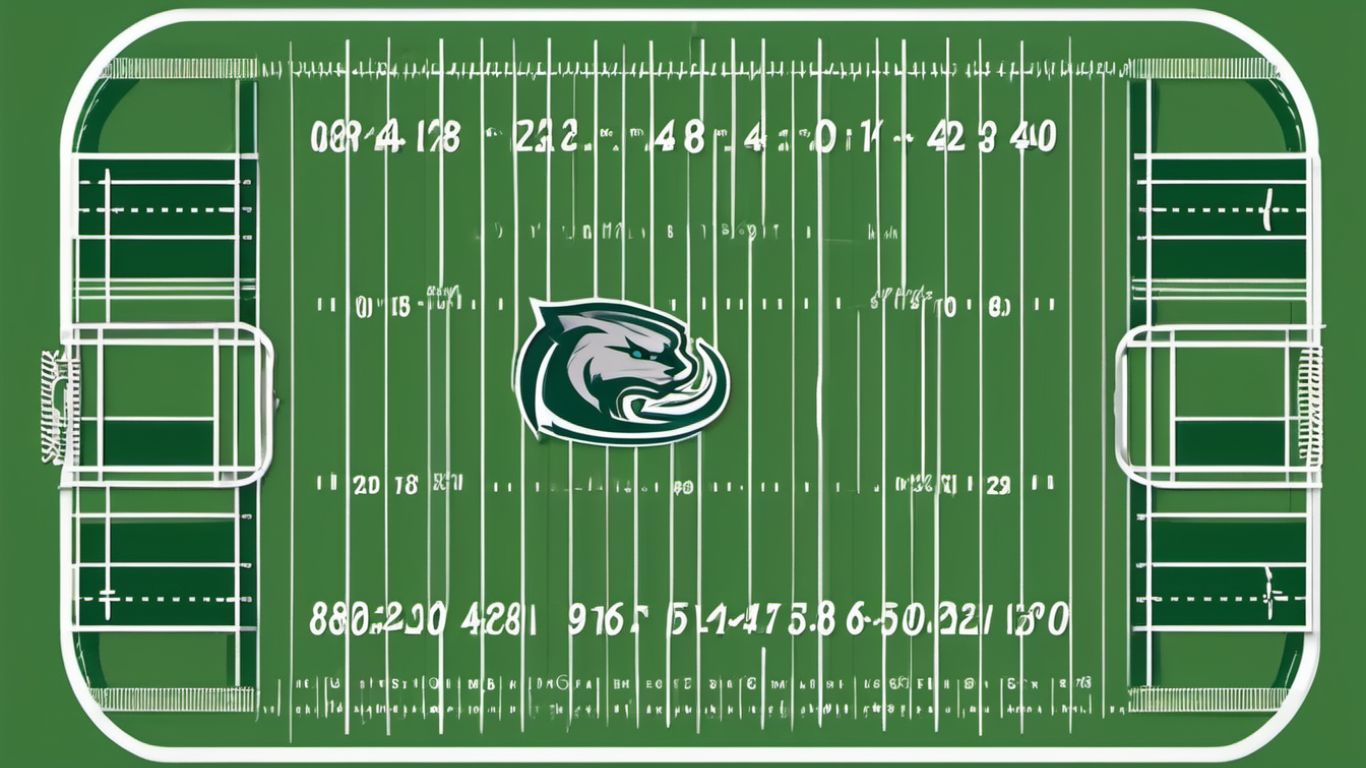Points in hockey are awarded to teams or players for scoring goals or making assists. The points system is used to determine rankings and awards in the sport.
It plays a crucial role in recognizing individual and team performances and is an important aspect of the game’s statistics and scoring records.
Understanding The Game Of Hockey
Welcome to the exciting world of hockey! Whether you’re a fan watching from the stands or a player on the ice, understanding the game is key to fully enjoying the thrill. In this article, we will focus on one vital aspect of hockey: points. Points are crucial in determining the outcome of a game and can make all the difference between victory and defeat. Let’s dive in and unravel the mysteries of points in hockey.
Basic Rules And Objectives
When it comes to understanding points in hockey, it’s essential to grasp the basic rules and objectives of the game. Hockey is played between two teams, each with the objective of scoring goals and preventing the opposing team from doing the same. To score a goal, players must shoot the puck into the opponent’s net. The team with the most goals at the end of the game emerges victorious. However, not all goals carry the same weight when it comes to earning points. Let’s explore this further.
Positioning And Strategy
In addition to scoring goals, players on the ice must also focus on positioning and strategy to ensure their team’s success. Positioning refers to the specific areas on the ice where players should be to maximize their chances of scoring or defending. Each team has different positions, including forwards, defensemen, and goaltenders, each with unique roles and responsibilities. Understanding positioning is vital for players to work together effectively as a unit.
Strategy is another crucial element that influences point scoring in hockey. Teams strategize to create opportunities to score goals while minimizing their opponent’s chances. This can involve executing specific plays, utilizing team formations, and adapting tactics based on the game’s circumstances. By employing strategic thinking, teams can gain an advantage and increase their chances of earning points.
When it comes to earning points in hockey, there are different types of goals that contribute. Here’s a breakdown:
- Even-strength goals: These are goals scored when both teams have an equal number of players on the ice, excluding the goaltender. They are awarded one point for each even-strength goal.
- Power-play goals: Power plays occur when one team has more players on the ice due to a penalty against the opposing team. Goals scored during power plays earn two points.
- Short-handed goals: Short-handed goals are scored when a team is at a disadvantage due to a player serving a penalty. These goals also earn two points for the team.
- Empty-net goals: When a team removes their goaltender in favor of an extra skater, it creates an opportunity for an empty-net goal. These goals earn one point.
It’s important to note that the regulations surrounding point systems can vary slightly between different leagues, so it’s always best to consult the specific rules in your area.
Understanding points in hockey is fundamental to following the game and appreciating the outcome. Whether it’s the adrenaline rush of a power-play goal or the brilliance of a short-handed goal, points bring excitement and determine the success of a team. So, next time you’re watching a hockey game, keep an eye on the points, and you’ll have a deeper understanding of the action on the ice.
The Scoring System In Hockey
In hockey, the scoring system plays a crucial role in determining the winners and losers of the game. Points are awarded to players based on their performance on the ice, and these points contribute to their overall stat line. Understanding how points are earned can help fans appreciate the game even more. Let’s take a closer look at the scoring system in hockey.
Overview Of Points
In hockey, points are awarded to players for their contributions to goals, whether they are the ones directly responsible for scoring or assisting in the goal. Points provide a measure of a player’s offensive effectiveness and are usually totaled over a season to determine individual stats and awards.
Types Of Goals
There are different types of goals in hockey, and each contributes to a player’s point tally. The most common goal is the “even-strength goal,” where a player scores while both teams have the same number of players on the ice. This type of goal adds one point to the player’s stat line.
Another important type of goal is the “power-play goal.” This occurs when a team has a numerical advantage due to a penalty against the opposing team. If a player scores during a power play, they receive one point, just like an even-strength goal.
The final type of goal is the “short-handed goal.” This occurs when a team scores while they are down a player due to a penalty. A player earns a point for a short-handed goal as well, encouraging aggressive play even when at a disadvantage.
Assists And Their Significance
Assists also contribute to a player’s point total, showcasing their ability to set up scoring opportunities for their teammates. An assist is awarded to the player(s) who directly contribute to scoring a goal, typically by making the pass or creating the play that leads to the goal.
Assists are just as crucial as goals since they recognize the importance of teamwork and the ability to facilitate offensive plays. Each assist a player earns contributes one point to their overall stats, reinforcing their impact on the game.
Furthermore, assists are significant in tie-breaker situations since goals scored carry more weight when the overall points of two players are the same. The number of assists a player has can be the deciding factor in determining their standing in the league rankings.
Goals: The Ultimate Achievement
In the game of hockey, scoring a goal is the ultimate achievement for players and teams alike. It not only adds points to the scoreboard but also signifies a moment of skill, strategy, and teamwork coming together to outmaneuver and outscore the opponent. Understanding what counts as a goal, differentiating between regular goals and power-play goals, and exploring stats and records related to goals can provide deeper insights into the game’s dynamics.
What Counts As A Goal?
A goal in hockey is scored when the puck crosses the goal line and enters the net. The entire puck must completely cross the goal line between the goalposts and beneath the crossbar for it to be considered a goal. If the puck is propelled into the net by an attacking player’s body, the goal will not count unless it was intentionally directed in with a distinct kicking motion. The referee has the final say in determining whether a goal is valid or not.
Differentiating Between Regular Goals And Power-play Goals
In hockey, a regular goal refers to a goal scored during regular play when both teams have the same number of players on the ice. On the other hand, a power-play goal occurs when a team scores while having a numerical advantage due to an opposing player serving a penalty. Power-play goals can be a game-changer, as they often shift momentum and put the penalized team at a disadvantage.
Stats And Records Related To Goals
Lofty goal-scoring achievements are celebrated and meticulously recorded in hockey. Players who consistently find the back of the net are revered for their scoring prowess. Various records, such as most goals scored in a single season or throughout a career, are closely monitored and upheld as testaments to a player’s skill and impact on the game. These records serve as historical markers for the sport’s progression and showcase the evolution of scoring strategies and techniques.

Credit: www.nhl.com
Assists: A Key Component Of Scoring
Hockey is a sport defined by teamwork and collaboration, and assists play a pivotal role in the scoring process. Understanding the role of assists in hockey is crucial for appreciating the full scope of a player’s contribution to the game. In this segment, we will explore the definition and importance of assists, assist statistics, and highlight some of the most notable players with high assist records in the history of hockey.
Definition And Importance Of Assists
An assist in hockey is awarded to the player or players who helped set up a goal by passing the puck to the goal scorer. This statistic reflects the collaborative nature of the sport, emphasizing the significance of teamwork and coordination. Assists are instrumental in recognizing the role of playmakers and their ability to create scoring opportunities for their teammates, thereby elevating the overall performance of the team.
Assist Statistics
Assist statistics serve as a barometer for a player’s ability to facilitate scoring opportunities for their team. It provides valuable insights into a player’s vision, passing accuracy, and their capacity to read the game, identifying openings and creating goal-scoring chances. By analyzing assist statistics, coaches, fans, and analysts can gauge a player’s playmaking prowess and strategic contribution to the team’s offensive gameplay.
Notable Players With High Assist Records
In the history of hockey, several players have left a lasting impression with their exceptional assist records. Legends such as Wayne Gretzky, Mario Lemieux, and Jaromir Jagr have set remarkable benchmarks with their unparalleled playmaking abilities, leaving an indelible mark on the sport. Their mastery of the game and their adeptness in setting up scoring opportunities for their teammates have solidified their status as some of the greatest playmakers in hockey history.
Understanding Points In Hockey
Definition And Calculation Of Points
Points in hockey refer to the individual statistics that measure a player’s offensive contribution to a game. Points are awarded for goals and assists, with different values assigned to each. Calculating points is straightforward, with each goal scored being worth one point and each assist awarded being worth one point as well. By adding up the total goals and assists, we arrive at a player’s overall point tally.
Differentiating Between Goals And Assists
In hockey, a goal is scored when a player successfully directs the puck into the opposing team’s net. It is the primary offensive objective and is awarded one point. On the other hand, an assist is attributed to a player who directly contributes to a goal being scored, typically by making a pass or setting up the goal-scoring opportunity. Assists also carry one point and provide recognition to players who facilitate goals.
Significance Of Points In Determining Player Performance
Points play a crucial role in assessing a player’s performance and contribution to the team. They provide a clear measurement of offensive productivity and the ability to create scoring opportunities. By tracking points, coaches, scouts, and fans can evaluate a player’s effectiveness on the ice. Points showcase a player’s skill, vision, and ability to score goals or make critical passes that lead to goals.
Historical Significance Of The Points System
The points system in hockey is not just a tally of goals and assists; it holds immense historical significance in the sport. Understanding the origin and evolution of the points system, as well as its impact on the game and player recognition, provides valuable insights into the development of this exciting sport.
Origin And Evolution Of The Points System
The points system in hockey can be traced back to the early days of the sport. In its early stages, hockey was primarily a goal-based game, with teams earning points solely for scoring goals. However, as the game evolved, the need for a more comprehensive scoring system became evident. The introduction of assists as a measurable statistical category brought about the evolution of the points system.
Over the years, the points system has undergone refinements and adjustments to accurately reflect a player’s overall contribution to the game. Previously, assists were only granted when the pass directly led to a goal. However, the modern points system now recognizes primary and secondary assists, which acknowledge a player’s involvement in the scoring play. This evolution has led to a more nuanced understanding of a player’s performance on the ice.
Impact On The Game And Player Recognition
The introduction of the points system has had a profound impact on the game of hockey. Not only does it enhance the statistical analysis of player performance, but it also encourages a more team-oriented approach. Players now strive not only to score goals but also to create scoring opportunities for their teammates, resulting in a more dynamic and exciting style of play.
The points system also plays a crucial role in recognizing and appreciating the contributions of individual players. By awarding points for goals and assists, the system highlights the efforts of those players who excel in both scoring goals and setting up their teammates for success. This recognition helps increase the visibility and marketability of these players, further fueling their motivation to excel on the ice.
Additionally, the points system establishes a common ground for comparison across different seasons, teams, and eras. It allows fans, analysts, and players themselves to assess and compare performances objectively. Without the points system, evaluating the impact of individual players would be significantly more challenging, and the appreciation of their accomplishments would be diminished.
In conclusion, the points system in hockey has a rich historical significance that cannot be overlooked. Its origin and evolution have shaped the game and its recognition of player contributions. By understanding and appreciating the points system, we gain valuable insights into the sport’s development and have a more comprehensive view of player performance.
Top Scoring Players Of All Time
Hockey’s top scoring players of all time showcase their talent through earning points on the ice. Points in hockey are accumulated when players either score goals or assist in creating them. These top players have mastered the art of scoring and have etched their names into the history of the game.
Legendary Players With The Most Career Points
When it comes to the top scoring players in hockey, a few names stand out as legends in the sport. These players have showcased their exceptional skills and talent, consistently racking up points throughout their careers. Let’s take a closer look at some of these iconic figures and the records they have achieved.
Records And Achievements Of Top Scorers
The top scorers in hockey have not only left an indelible mark on the game but also set numerous records and achieved remarkable feats. Here are some of their most notable records and achievements:
1. Wayne Gretzky: – Total career points: 2,857 – Most career goals: 894 – Most career assists: 1,963 – Holds the record for the most points in a single season: 215 – Won the Hart Trophy (NHL MVP) a record nine times
2. Jaromir Jagr: – Total career points: 1,921 – Second-most career goals: 766 – Known for his longevity, playing until his 50s – Holds the record for the most game-winning goals – Won the Art Ross Trophy (leading scorer) five times
3. Gordie Howe: – Total career points: 1,850 – Third-most career goals: 801 – Known for his toughness and versatility – Holds the record for being the oldest player to play in the NHL – Won the Hart Trophy six times
4. Mark Messier: – Total career points: 1,887 – Seventh-most career goals: 694 – Known for his leadership and ability to perform in clutch moments – Won the Hart Trophy twice – Captained two different teams to win the Stanley Cup (Edmonton Oilers, New York Rangers) These legendary players have not only left an incredible scoring legacy but have also inspired generations of hockey players with their skill, dedication, and passion for the game. Their records and achievements showcase their greatness and solidify their place among the all-time greats of hockey.
In summary, the top scoring players in hockey have amassed impressive career points, leaving behind a legacy that will be remembered for years to come. Their records and achievements serve as a testament to their exceptional skills and contributions to the sport. Whether it’s Wayne Gretzky’s unmatched career points or Gordie Howe’s toughness, these players continue to inspire and awe fans around the world.
Strategies For Maximizing Points
In hockey, points are highly valued as they contribute to a player’s overall performance and help their team secure victories. Whether you’re a seasoned player or new to the game, understanding the strategies behind maximizing points will undoubtedly enhance your scoring abilities. By adopting effective playing styles, honing your skills, and prioritizing teamwork, you can increase your point production on the ice.
Playing Styles That Lead To Higher Point Production
When it comes to maximizing points, certain playing styles have proven to be more effective. By emphasizing offensive tactics and positioning yourself strategically on the ice, you can significantly enhance your scoring opportunities. Here are a few playing styles to consider:
- The Playmaker: As a playmaker, your primary focus should be on setting up your teammates for goals. By showcasing exceptional passing skills, vision, and anticipating the game’s flow, you can create scoring chances. Playmakers often excel at assists, accumulating points by feeding their teammates with precise passes near the net.
- The Sniper: Snipers are known for their goal-scoring ability. They possess accurate shots, great hand-eye coordination, and exceptional precision. By becoming a sniper, you can increase your point production by consistently finding the back of the net. Remember to always be ready to unleash your powerful shot whenever an opportunity arises.
- The Two-Way Forward: Being a two-way forward means excelling in both offensive and defensive aspects of the game. By combining scoring prowess with defensive responsibilities, two-way forwards contribute to their team’s overall success. Their versatility allows them to accumulate points while remaining reliable in their own zone.
Tips For Improving Scoring Abilities
If you’re looking to improve your scoring abilities and boost your point production, consider incorporating these tips into your training regimen:
- Practice Accuracy: Spend time working on your shot accuracy by targeting specific areas of the net. By consistently hitting your intended targets, you’ll increase your chances of scoring goals and accumulating points.
- Enhance Stickhandling Skills: The ability to control the puck effectively is crucial for any scorer. Practice your stickhandling skills regularly to improve your ability to maneuver through defenders, create scoring opportunities, and boost your point production.
- Study Opponents: Analyze the playing styles and tendencies of your opponents. Understanding their strengths and weaknesses will enable you to exploit gaps in their defense, leading to more scoring chances and increased points.
- Practice Quick Release: Develop the skill of releasing your shot quickly. A quick release catches goalies off-guard and increases the likelihood of scoring goals, allowing you to accumulate more points in games.
- Maintain Fitness: Being physically fit is essential for optimal performance on the ice. Engage in regular strength and conditioning exercises to improve your endurance, speed, and agility. By staying fit, you’ll be able to sustain a high level of play throughout the game, increasing your chances of accumulating points.
Teamwork And Collaboration For Increased Points
In addition to individual skills, teamwork and collaboration play a vital role in maximizing points. Hockey is a team sport that requires seamless coordination among players. By prioritizing teamwork, you can create more scoring opportunities for yourself and your teammates, resulting in increased point production. Here are some strategies for effective collaboration:
- Communication: Maintain open lines of communication with your teammates on and off the ice. Clearly communicate your intentions, provide support, and keep everyone informed to ensure cohesive gameplay that leads to increased points.
- Develop Chemistry: Building chemistry with your linemates or fellow teammates allows for better understanding and anticipation of each other’s movements. By developing strong chemistry, you’ll be able to execute plays effectively, leading to more scoring opportunities and higher point production.
- Utilize Give-and-Go: Utilize the give-and-go strategy to create scoring chances. Pass the puck to a teammate and quickly move to an open space to receive a return pass, leading to effective scoring opportunities and a higher chance of accumulating points.
- Create Screens and Deflections: Work with your teammates to create screens in front of the opposing goalie, obstructing their view. By doing so, you can deflect shots towards the net, increasing the chances of scoring goals and earning valuable points.
- Support Defensive Efforts: Remember that effective defense leads to offense. By actively supporting your teammates in their defensive responsibilities, you’ll create turnovers and gain possession of the puck, resulting in more scoring chances and increased point production.
The Role Of Goaltenders In Points
Can goaltenders score points?
Goaltenders in hockey are not able to score points in the traditional sense, as they do not have the opportunity to assist in goals or score goals themselves. However, goaltenders play a crucial role in preventing the opposing team from scoring, which indirectly contributes to the team’s overall point tally.
1. Shutouts: When a goaltender successfully prevents the opposing team from scoring for an entire game, they are credited with a shutout, earning them and the team valuable points in the standings.
2. Assisting: While goaltenders cannot be officially awarded with assists, their ability to pass the puck to their teammates to initiate offensive plays can indirectly lead to goals and points.
3. Defensive contributions: Goaltenders play an essential role in penalty killing and defensive zone play, which helps in preventing goals and giving the team an opportunity to maintain or increase their lead, ultimately contributing to their overall point accumulation.
Player Awards And Recognition
In hockey, players are recognized and rewarded for their outstanding performance on the ice. The points they accumulate throughout the season not only contribute to their team’s success but also play a significant role in earning individual accolades and honors. Let’s delve into the player awards and recognition in hockey, focusing on the remarkable achievements based on points.
Awards Based On Points
Scoring points is pivotal in determining a player’s impact on the game. Several awards are specifically designed to honor and celebrate the top point scorers in the league. Achieving a high number of points not only showcases a player’s skill and talent but also their ability to contribute offensively to their team’s success.
Honors For Top Scorers
Top scorers in hockey are commemorated for their exceptional performance through a range of honors and accolades. These recognitions not only highlight their individual prowess but also demonstrate their value in driving their team’s success. Players who consistently contribute significant points are revered and celebrated within the hockey community.
The Hart Memorial Trophy: Mvp Based On Points
The Hart Memorial Trophy, known as the most valuable player (MVP) award in hockey, is often awarded to the player who demonstrates remarkable performance and impact, often reflected in their point totals. This prestigious honor underscores the correlation between a player’s points and their overall significance to their team’s success, ultimately recognizing their exceptional contributions to the game.
Points And Fantasy Hockey
In the world of hockey, points hold great importance. They are not just crucial for teams aiming to win games, but also for fantasy hockey enthusiasts looking to assemble a winning roster. Points are the currency of fantasy hockey, dictating the success or failure of any given team. Let’s explore the impact of points in fantasy hockey and how you can draft and manage players for higher point production.
How Points Affect Fantasy Team Performance
Points are the lifeblood of a fantasy hockey team. They determine the overall performance and success of the team within the fantasy league. In fantasy hockey, players earn points for various on-ice accomplishments such as scoring goals, assisting on goals, and even participating in key defensive plays. Points play a crucial role in determining the rank and position of the team within the league standings.
Fantasy team owners constantly keep an eye on their players’ points as they are directly correlated to the team’s overall performance. A player’s point production can decide whether the team wins or loses a given week or even the entire season. It is a key metric used to evaluate a player’s value within the fantasy hockey landscape.
Drafting And Managing Players For Higher Point Production
As a fantasy team owner, it is essential to prioritize players who consistently generate a high number of points. When drafting players for your fantasy hockey team, you should carefully examine their past performance and point production. Look for players who have a track record of scoring goals, registering assists, and contributing positively to their team’s offense.
Furthermore, it is crucial to consider a player’s role on their respective team. For example, forwards generally have a higher probability of accumulating more points than defensemen due to their offensive responsibilities. Similarly, players who receive significant ice time and power play opportunities are more likely to generate points consistently.
Once your fantasy team is drafted, the management aspect comes into play. Regularly analyzing player performances, injuries, and lineup changes is essential. By staying updated and making informed decisions, you can optimize your team’s point production. It is also wise to monitor the waiver wire for emerging players who show potential for increased point production.
Ultimately, it is crucial to strike a balance between having players who are point-generators and those who contribute to other statistical categories such as hits, blocked shots, and penalty minutes. A well-rounded approach will maximize your team’s chances of success in fantasy hockey leagues.

Credit: www.amazon.com
Controversies And Criticisms
Hockey is a sport loved by millions around the world, yet the points system used to determine standings has been subject to debate and criticism. While points are a fundamental aspect of the game, some argue that the current system may not accurately reflect a team’s abilities. Let’s delve into the controversies surrounding points in hockey and explore proposed changes and alternatives.
Debate Over The Fairness Of Points System
The fairness of the points system is a contentious topic among hockey enthusiasts. One major debate revolves around the allocation of points for different types of wins and losses. The current system awards two points for a win, regardless of whether it occurs in regulation time or overtime. However, some argue that teams that win in regulation should receive more points to incentivize aggressive play and discourage overtime reliance.
Another point of contention is the allocation of points for losses. Currently, a team receives no points for a regulation loss, one point for a loss in overtime or shootout, and two points for a win. Critics argue that this system disproportionately rewards teams that prolong games into overtime and penalizes teams that lose in regulation, potentially distorting the standings and creating an unfair environment.
Proposed Changes And Alternatives
Given the criticisms of the current points system, various proposed changes and alternatives have been suggested. One proposal is to award three points for a win in regulation, two points for an overtime or shootout win, and one point for an overtime or shootout loss. This alternative would encourage teams to prioritize winning in regulation, ultimately leading to more exciting and aggressive gameplay.
Another suggested change is the introduction of a three-point system, where a team earns three points for a win in regulation, two points for an overtime or shootout win, and one point for an overtime or shootout loss. This modification aims to further incentivize teams to play for regulation wins and could potentially foster a more accurate representation of a team’s performance throughout the season.

Credit: www.reddit.com
Frequently Asked Questions
What Do Points Mean In Hockey?
In hockey, points are awarded to players for scoring goals and assisting in goals. They are used to measure a player’s offensive contribution to the team.
How Many Points Do You Get In Hockey For A Win?
In hockey, a team earns 2 points for a win. This is a common scoring system in most professional and amateur hockey leagues worldwide.
How Do You Get 3 Points In Nhl?
In NHL, a team or player can get 3 points by scoring a goal and also getting an assist on the same goal.
How Many Points Can You Score Per Goal In Hockey?
In hockey, you can score one point per goal.
Conclusion
To sum up, points in hockey play a crucial role in determining a team’s success. They are awarded for scoring goals and assisting in the play, showcasing a player’s contribution to the game. Understanding how points are earned and the significance they hold can enhance one’s knowledge of the sport.
So, whether you’re a fan or a player, embracing the concept of points in hockey will deepen your appreciation for the sport and its skilled individuals. Keep supporting your favorite team as they strive for those coveted points on the ice!









